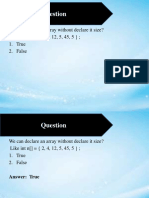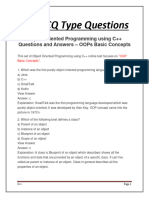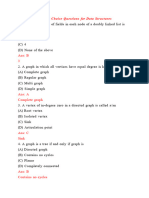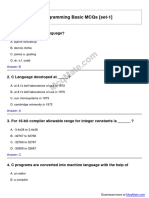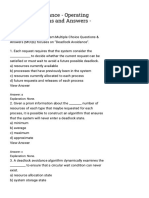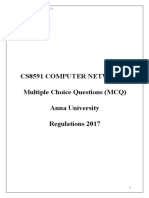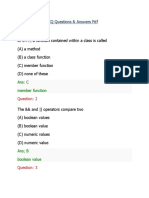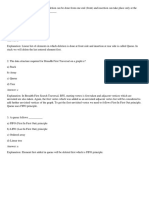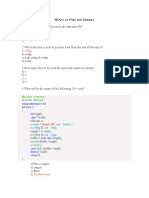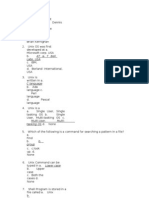100% found this document useful (1 vote)
1K views9 pagesMCQ's On Array
The document contains 30 multiple choice questions about arrays. It covers topics like defining arrays, initializing arrays in different languages like C and Java, array indexing and bounds, accessing array elements, one dimensional and multi-dimensional arrays, and common array operations like searching and traversal. The questions are designed to test fundamental concepts about arrays.
Uploaded by
prathamesh patilCopyright
© © All Rights Reserved
We take content rights seriously. If you suspect this is your content, claim it here.
Available Formats
Download as PDF, TXT or read online on Scribd
100% found this document useful (1 vote)
1K views9 pagesMCQ's On Array
The document contains 30 multiple choice questions about arrays. It covers topics like defining arrays, initializing arrays in different languages like C and Java, array indexing and bounds, accessing array elements, one dimensional and multi-dimensional arrays, and common array operations like searching and traversal. The questions are designed to test fundamental concepts about arrays.
Uploaded by
prathamesh patilCopyright
© © All Rights Reserved
We take content rights seriously. If you suspect this is your content, claim it here.
Available Formats
Download as PDF, TXT or read online on Scribd
/ 9



